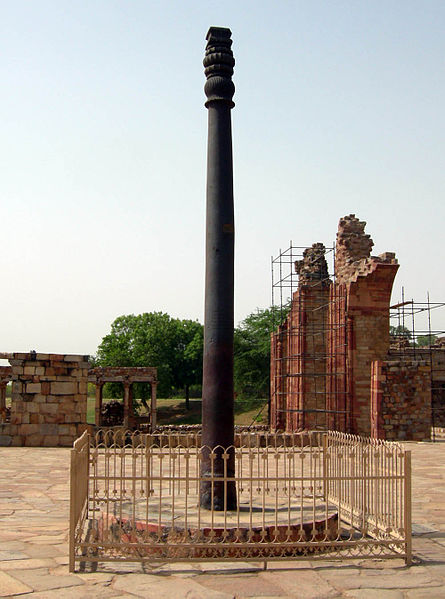Pig iron, also known as crude iron, is an intermediate good used by the iron industry in the production of steel. It is developed by smelting iron ore in a blast furnace. Pig iron has a high carbon content, typically 3.8–4.7%, along with silica and other dross, which makes it brittle and not useful directly as a material except for limited applications.
Pig iron used to manufacture ductile iron
Casting pig iron at the Iroquois smelter in Chicago between 1890 and 1901
Ferrous metallurgy is the metallurgy of iron and its alloys. The earliest surviving prehistoric iron artifacts, from the 4th millennium BC in Egypt, were made from meteoritic iron-nickel. It is not known when or where the smelting of iron from ores began, but by the end of the 2nd millennium BC iron was being produced from iron ores in the region from Greece to India, The use of wrought iron was known by the 1st millennium BC, and its spread defined the Iron Age. During the medieval period, smiths in Europe found a way of producing wrought iron from cast iron, in this context known as pig iron, using finery forges. All these processes required charcoal as fuel.
Willamette Meteorite, the sixth largest in the world, is an iron-nickel meteorite.
Iron meteorites consist overwhelmingly of nickel-iron alloys. The metal taken from these meteorites is known as meteoric iron and was one of the earliest sources of usable iron available to humans.
The iron pillar of Delhi
Dagger and its scabbard, India, 17th–18th century. Blade: Damascus steel inlaid with gold; hilt: jade; scabbard: steel with engraved, chased and gilded decoration






